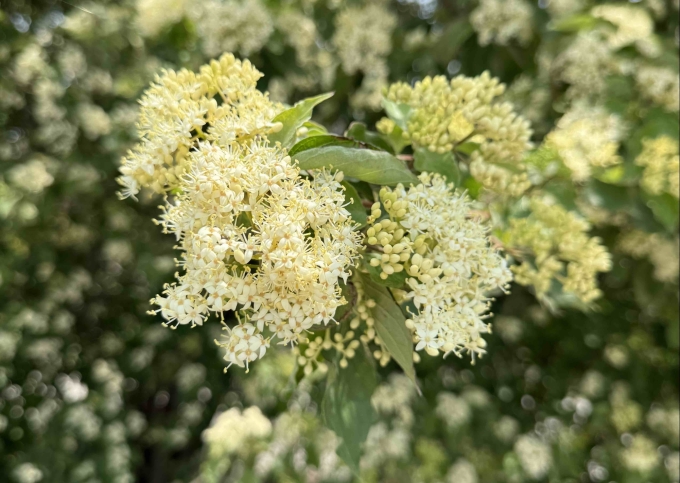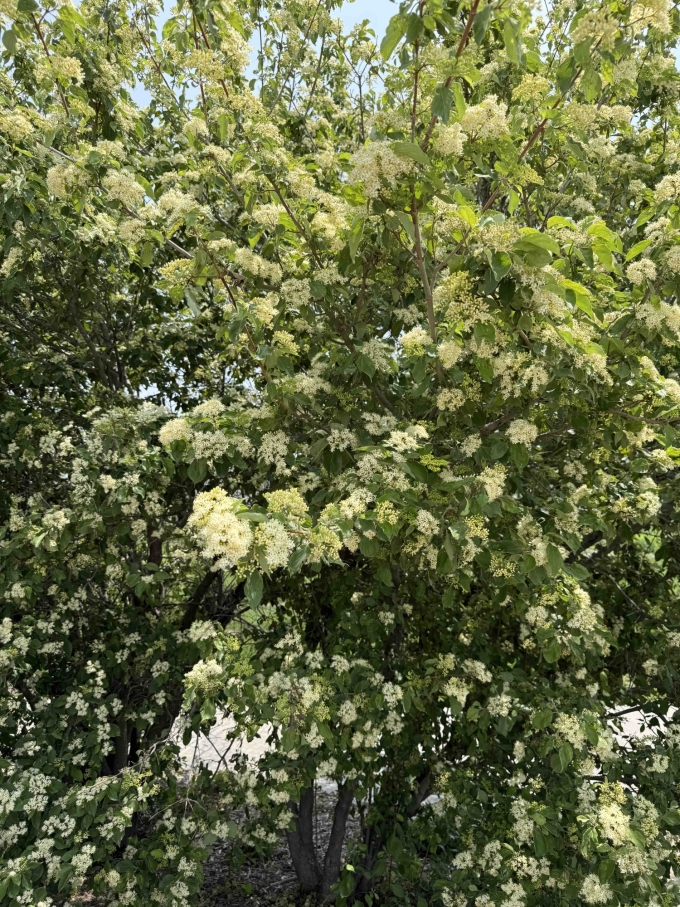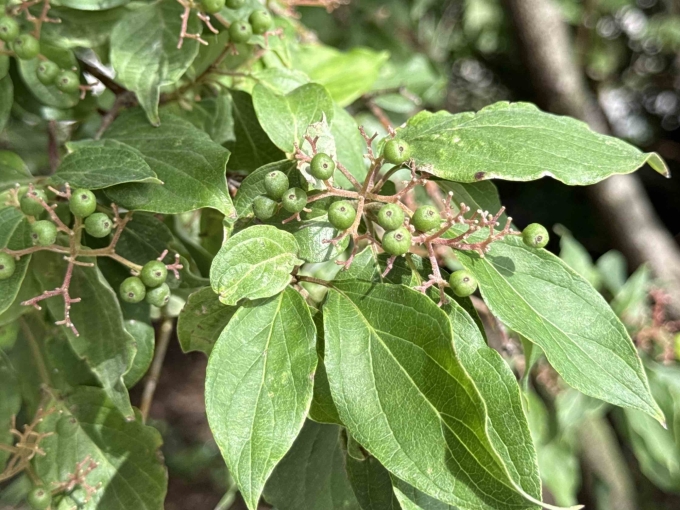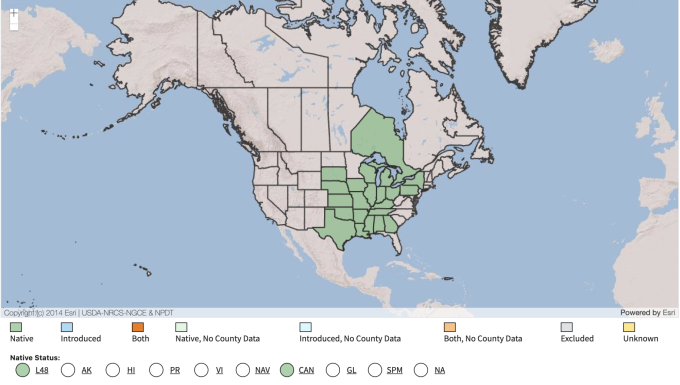Common Name: Roughleaf Dogwood
Family: Cornaceae
Plant Type: Deciduous Shrub or Small Tree
Native Range: Central and eastern North America, including all of Nebraska
Hardiness Zones: 4–8
Height: 6.0 to 15.0 feet
Spread: 6.0 to 12.0 feet (can form colonies)
Bloom Time: Late spring to early summer (May–June in Nebraska)
Bloom Description: Flat-topped clusters of small, creamy-white flowers
Sun Exposure: Full sun to part shade
Water Needs: Medium
Soil Preference: Well-drained to moist soils; tolerates clay, loam, and rocky soils
Management Level: Medium
Suggested Use: Wildlife plantings, windbreaks, erosion control, naturalized areas
Attracts: Bees, butterflies, birds, and other wildlife
Tolerates: Drought, poor soils, clay, occasional flooding, deer
Notable Features: Dense thickets, white berries in late summer, excellent wildlife value, native to Nebraska
Nebraska Growing Notes:
Roughleaf Dogwood is a hardy, adaptable, and ecologically important native shrub, widely distributed throughout Nebraska. It tolerates full sun to light shade and thrives in a range of soils, including clay and rocky soils often found on slopes and roadsides.
It spreads vigorously by underground rhizomes, forming dense colonies that are excellent for soil stabilization, windbreaks, and wildlife cover. The creamy-white flowers attract a variety of pollinators, and the white berries that follow are eaten by birds and small mammals.
Its dense growth habit makes it great for wildlife but may require regular management in formal landscapes to prevent unwanted spreading.
Landscape Use:
Best suited for naturalized plantings, windbreaks, erosion control on slopes, wildlife habitat gardens, and prairie or woodland edges. Combines well with other natives like Prunus americana, Amorpha fruticosa, Symphoricarpos, and native grasses.
Caution:
Non-toxic and valuable for wildlife, but its aggressive suckering habit can make it unsuitable for small or formal gardens unless controlled. Annual thinning or mowing edges can keep colonies in check.
Garden Locations:




